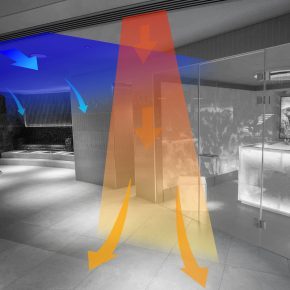
Stannah: Guidance on manual handling at work
As an employer or business owner, you have a legal duty to provide a safe workplace. Part of this obligation is knowing the correct manual handling techniques and procedures that are essential to protecting you and your staff from injuries in the workplace.
These will vary according to the nature of your business and your workplace. However, there are some general safe manual handling guidelines applicable to every workplace when it comes to moving a load that need following, as Stannah explains…
Step 1: Avoid the need for manual handling
Is there an alternative to lifting the load through bodily force? Under the Manual Handling Operations Regulations 1992, employers have a duty to avoid manual handling tasks ‘so far as is reasonably practicable’.
Step 2: Plan the task carefully to identify any hazard
Employers are responsible for carrying out risk assessments for manual handling tasks. The Health and Safety Executive recommends doing a TILE assessment which includes considering the Task, Individual lifting, the Load and the Environment that it will be lifted. After completing a risk assessment, employers must take steps to reduce any risks.
Step 3: Provide lifting aids or equipment
Don’t allow workers to rely on their own strength. There are plenty of mechanical lifting aid options available.
Step 4: Reduce workloads and allow regular breaks
Always split loads into smaller ones and allow staff to take proper rest breaks or provide alternative tasks during the working day.
Step 5: Adapt the workplace
Consider reducing the distance workers are carrying loads over, especially the need to carry heavy items between floors
Step 6: Safe manual handling at work processes & training
Ensure you have provided all staff with adequate training to protect them from hazardous manual handling.
You can read more about manual handling in Stannah’s downloadable guide.
What occupations use service & goods lifts for manual handling?
Most occupations involve manual handling. In some cases, employees need to use lifting equipment to lift and handle different loads and items safely. If handled incorrectly, they can result in musculoskeletal disorders. Employers are legally obliged to provide staff with an understanding of the risks they face and what they can do to reduce the risk themselves.
Service and goods lifts that help with manual handling are often found in workplaces such as:
– Hospitals and care homes
– Warehouses and factories
– High Street shops, including supermarkets
– Pubs and restaurants
– Garden centres and nurseries
Some manual handling examples
John in the café
John is a busser in a busy restaurant in London. He plays a vital role in clearing a guest’s table and sending the plates, utensils and glasses to the dishwasher in the kitchen in the basement after the customer leaves. He relies on a dumbwaiter to discreetly make his task safer and more efficient.
Lisa in the stockroom
Lisa works in a busy toy shop on her local High Street. She plays a vital role in replenishing the shop floor as items are sold. As the stockroom is based on the upper level she makes use of a trolleylift, to move stock safely. This makes the task less backbreaking and time-consuming.
Do you think you could improve manual handling in your workplace by introducing a service or goods lift? Browse through Stannah’s guide to choosing a service & goods lift or contact the team.
Stannah is always happy to help different businesses manage the risk of injury from manual handling by introducing a lift to their workplace.
Visit Supplier's page
Latest news

2nd April 2025
FIT Show 2025 Launches Innovative Marketplace Feature to Enhancing Value for Installers
FIT Show, the UK’s leading event for the window, door, flat glass, hardware, and roofing industries, is excited to announce the launch of a brand new Marketplace feature at its upcoming 2025 event (Birmingham NEC, 29 April – 1 May).
Posted in Architectural Ironmongery, Articles, Building Industry Events, Building Industry News, Building Products & Structures, Doors, Exhibitions and Conferences, Glass, Glazing, Hand Tools, Innovations & New Products, Plant, Equipment and Hire, Power Tools, Restoration & Refurbishment, Retrofit & Renovation, Roofs, Seminars, Training, Windows
2nd April 2025
Hi-spec deployment of EJOT Colorfast at new Birmingham logistics park
EJOT Colorfast fasteners have been used extensively in the construction of eight new high-specification warehousing and logistics buildings at the Urban 8 Logistics Park in King’s Norton, Birmingham.
Posted in Articles, Building Industry News, Building Products & Structures, Building Systems, Case Studies, Facades, Restoration & Refurbishment, Retrofit & Renovation, Roofs, Walls
2nd April 2025
SWA member delivers ‘fresh Hope’ for university’s Sustainable Building department
A detailed contract to restore an iconic Art Deco building in the heart of Birmingham’s Jewellery Quarter was carried out by Steel Window Association member, The Window Repair Company (Northwest) Limited.
Posted in Articles, Building Associations & Institutes, Building Industry News, Building Products & Structures, Building Systems, Case Studies, Glass, Glazing, Restoration & Refurbishment, Retrofit & Renovation, Steel and Structural Frames, Sustainability & Energy Efficiency, Windows
1st April 2025
Gilberts Takes Thermal Comfort to New Heights
Gilberts Blackpool is continuing to build on its reputation as a pioneer with the unveiling of ThermaAstute™ – the most extensive range of thermally sensitive diffusers in the market.
Posted in Air Conditioning, Articles, Building Industry News, Building Products & Structures, Building Services, Facility Management & Building Services, Heating, Ventilation and Air Conditioning - HVAC, Innovations & New Products, Restoration & Refurbishment, Retrofit & Renovation, Sustainability & Energy Efficiency
 Sign up:
Sign up: 